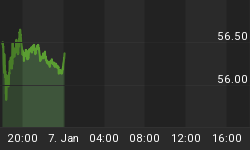As we end another week of nuttiness, the only thing you need to know about investor sentiment is that the "dumb money" is buying and the "smart money" is selling. Now this doesn't always mean you should "run for the hills" because the world as you know it is about to end, but it probably does mean that we are closer to the end of this rally than at the beginning. If that is the case, ask yourself: what is your plan?
The "Dumb Money" indicator (see figure 1) looks for extremes in the data from 4 different groups of investors who historically have been wrong on the market: 1) Investors Intelligence; 2) MarketVane; 3) American Association of Individual Investors; and 4) the put call ratio. This indicator shows extreme bullishness.
Figure 1. "Dumb Money"/ weekly
Figure 2 is a weekly chart of the SP500 with the InsiderScore "entire market" value in the lower panel. From the InsiderScore weekly report: "Insider selling remains at elevated levels and during the recently completed short week of trading we saw a 25% increase in the number of sellers and an 18% increase in the number of buyers. The result was that sellers outnumbered buyers by a 4-to-1 ratio, consistent with a week earlier."
Figure 2. InsiderScore "Entire Market" value/ weekly
Figure 3 is a weekly chart of the SP500. The indicator in the lower panel measures all the assets in the Rydex bullish oriented equity funds divided by the sum of assets in the bullish oriented equity funds plus the assets in the bearish oriented equity funds. When the indicator is green, the value is low and there is fear in the market; this is where market bottoms are forged. When the indicator is red, there is complacency in the market. There are too many bulls and this is when market advances stall. Currently, the value of the indicator is 70.61%. Values less than 50% are associated with market bottoms. Values greater than 58% are associated with market tops. It should be noted that the market topped out in 2011 with this indicator between 70% and 71%.
Figure 3. Rydex Total Bull v. Total Bear/ weekly
TheTechnicalTake offers a FREE e-newsletter: HERE















